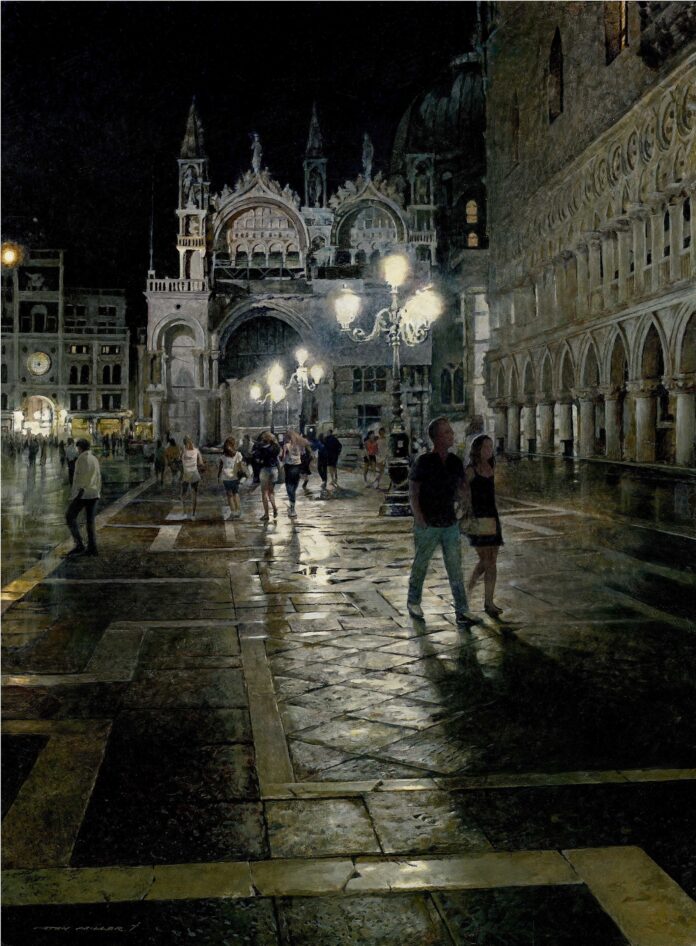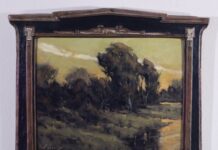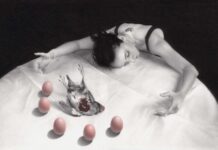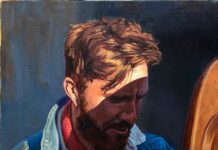Stan Miller has been a professional painter in watercolor and egg tempera for more than thirty years. He has exhibited his paintings in numerous exhibitions, galleries, and museums. A signature member of the American Watercolor Society as well as an AWS award winner, Stan also teaches workshops and classes in Spokane, the United States, and around the world. He recently released the art video workshop “Watercolor Techniques for Capturing Travel Memories – A Journey to Venice” with PaintTube.tv.
Here, Stan Miller shares his step-by-step demo of the egg tempera painting “Venice Work Boats.”
1. I first come up with a detailed drawing. Then I mix egg yolk with water so that it is somewhat creamy, and cover the drawing with this mixture. I start putting in detail around the boats.
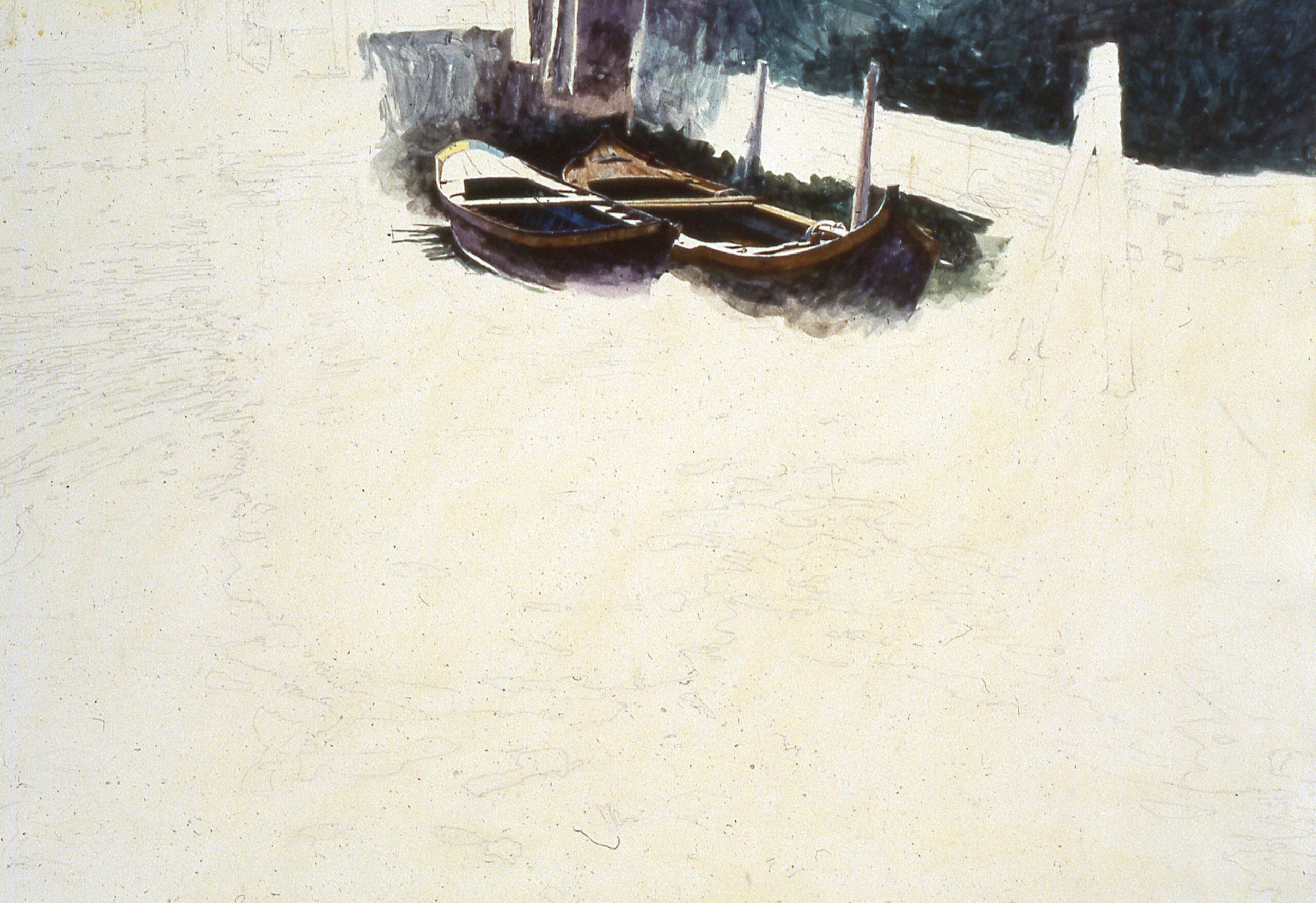
***
2. I continue detailing the area of the boats using many layers. Very little water is used, no washes.
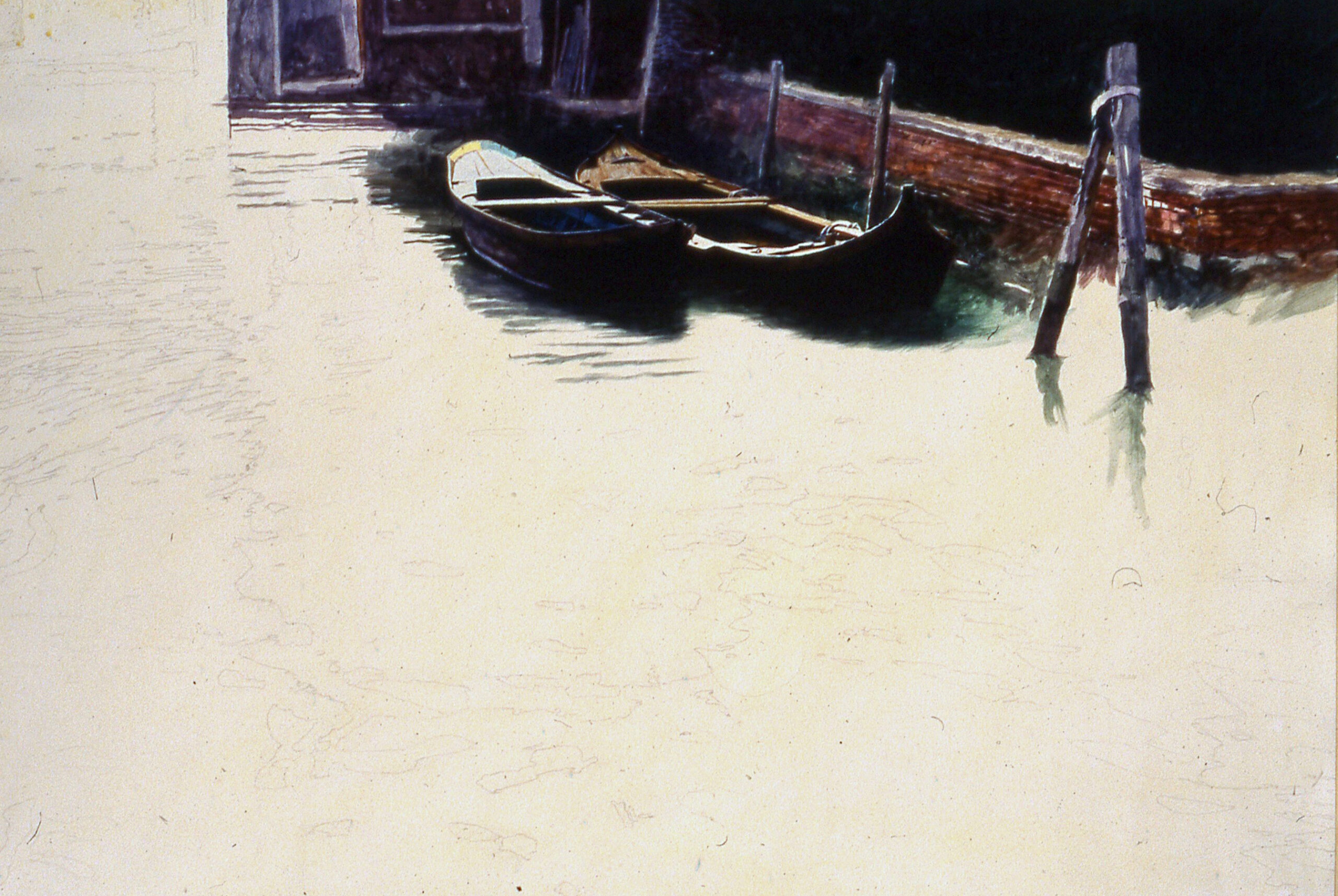
***
3. After finishing the area of the boats, I move downward into the water, starting with light glazes and slowly getting darker and more detailed.
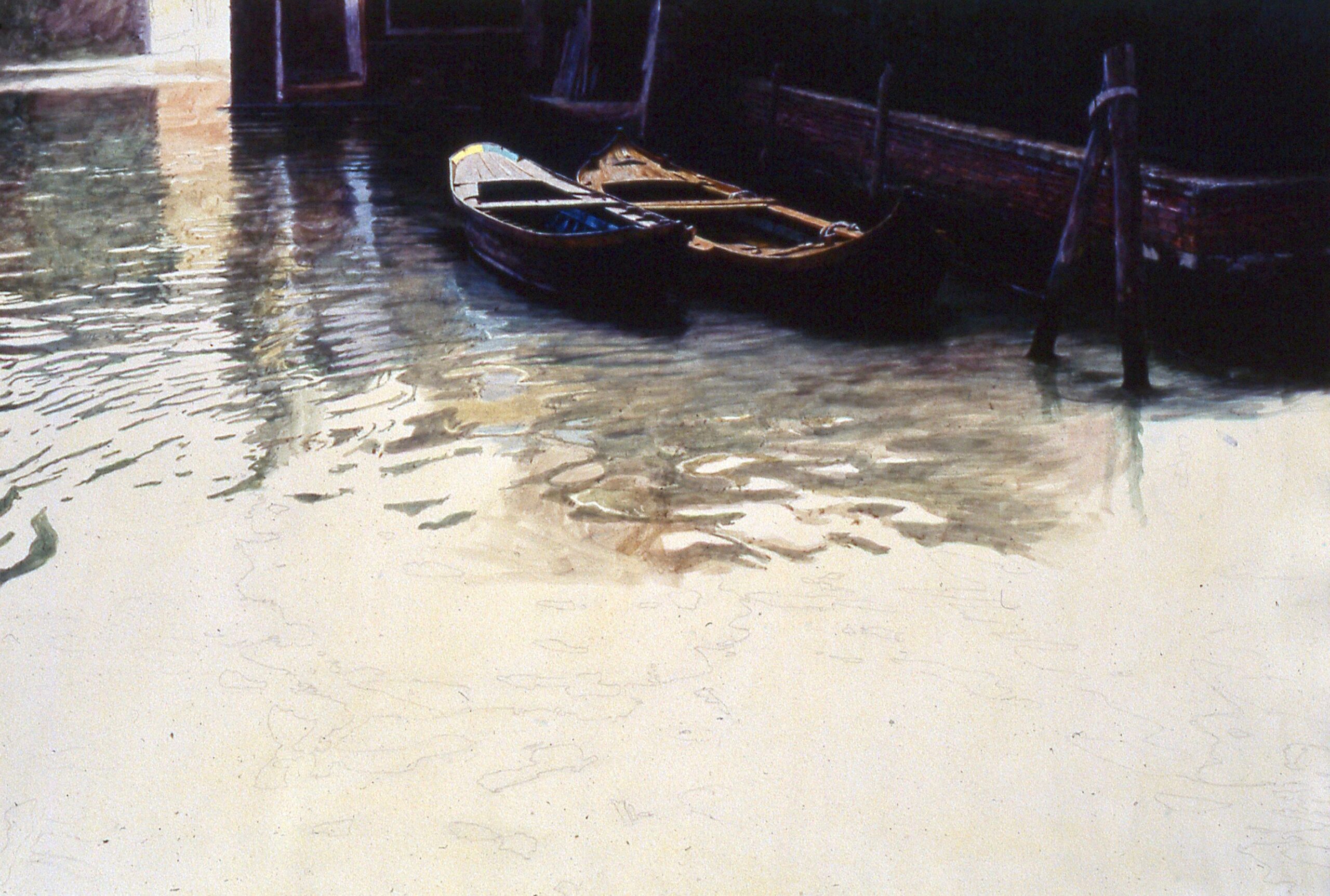
***
4. I continue laying paint and getting more detailed.
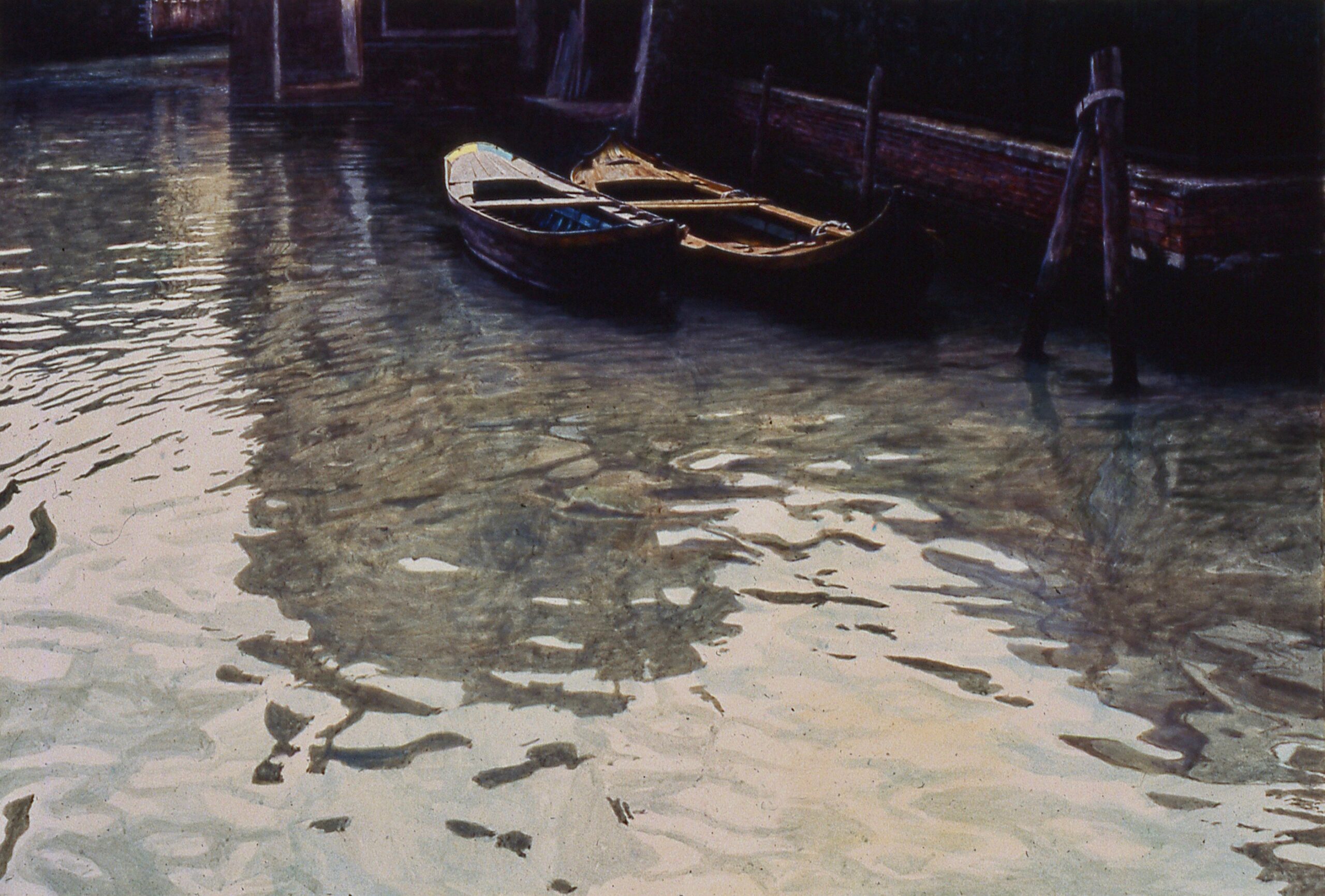
***
5. In the final stage, I adjust the entire painting, often tweaking the color and values to improve the mood. In egg tempera on used white paint and often paint light over dark, as in oil painting. The mood and design is what matters most when the painting is finished.
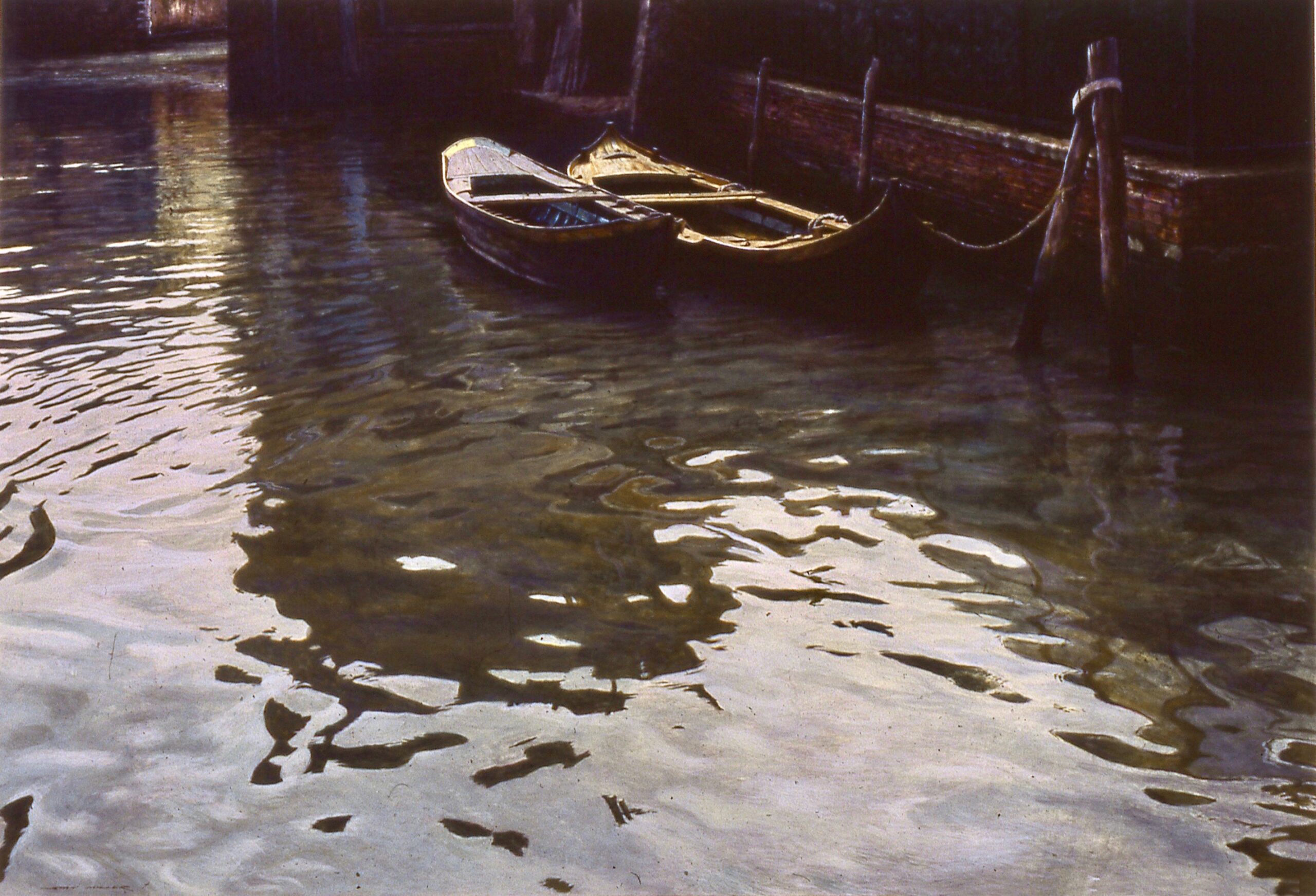
***
On Painting in Venice
I first visited Venice in 1982 with a friend. I immediately fell in love. No cars or honking horns, no sirens, neon advertising signs, no clashing of old run down buildings and trash with modern, box shaped soulless cubes. Everything had character, history, mood, and color. Some say the boat symbolizes the spiritual vessel; this is fitting, with water as the pathway between all these buildings, and small classic foot bridges everywhere.
There’s nothing but the sound of people walking and talking…boats purring, usually in the distance, and it’s even more quiet when one leaves the popular pathways. When one chooses to “get lost” one finds a quietness in Venice. The classic architecture contrasts with the water, which is always changing, very calm and smooth in the morning and growing rougher during the day as the boat traffic increases.
Artists have been attracted to Venice through the centuries. David Hume, the Scottish philosopher, said that great art stands the test of time. Venice, in so many ways, especially compared with most cities around the world, is timeless. I think emerging oneself in this place connects one with the artists’ desire to create a work of art that isn’t just a trend, but a work of beauty that stands the test of time.
Boats, water, classic architecture, and yet, modernism everywhere as the buildings and boats reflect off of the water all that is above in now distorted into abstract patterns. For me, the water reflections are like jazz and the architecture above the water, classical music. People travel on boats, and simply walk, which itself has a spiritual quality, certainly in comparison to the way most people travel in a large city.
I’ve been to Venice multiple times. Every time I take my paints and do a series of small watercolor studies, and I take numerous reference photos. When I return home to my art studio, I do more refined and detailed paintings. Tweaking the lighting, the compositions, and placement of shapes is something that is much easier to do in your studio than on location.
In my video, “Watercolor Techniques for Capturing Travel Memories – A Journey to Venice,” I discuss primarily the details as to how I do my Venice paintings: Drawing, understanding the values, what values are; using and understanding color as it relates to doing a watercolor; composition, adjusting and refining our design and compositions; mixing the water, paint and placing the medium on paper; the variety of techniques that one can use is addressed. There’s also a bit about choosing subjects that match one’s skill level…many students choose subjects or approaches to painting that are too difficult for the level of experience. But, everyone can learn to paint and event create a very detailed painting if properly instructed.
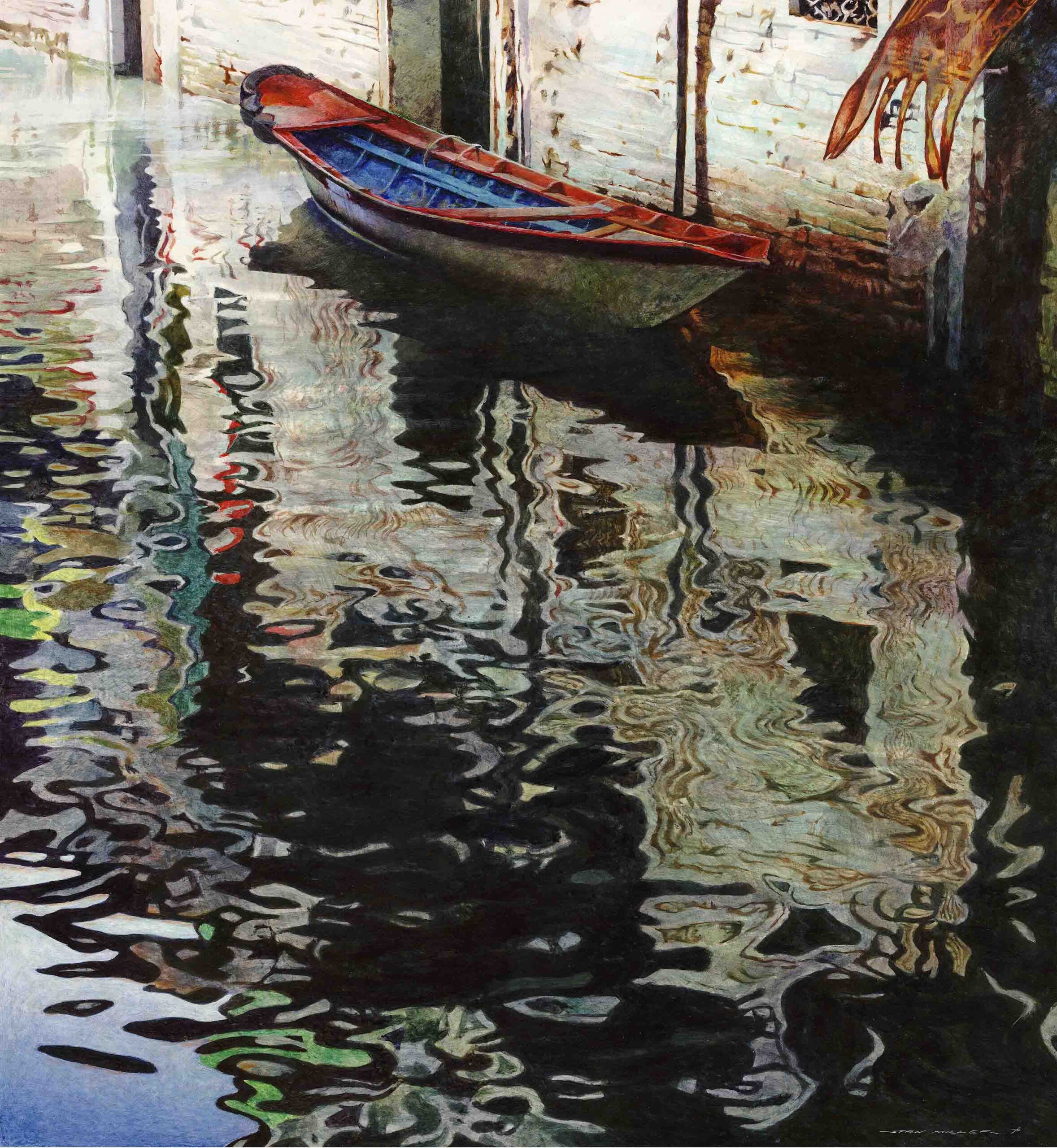
The abstracted patterns and texture of the water contrasted with the boat, then the mystery of the waving flag, realism with abstraction is something I enjoy.
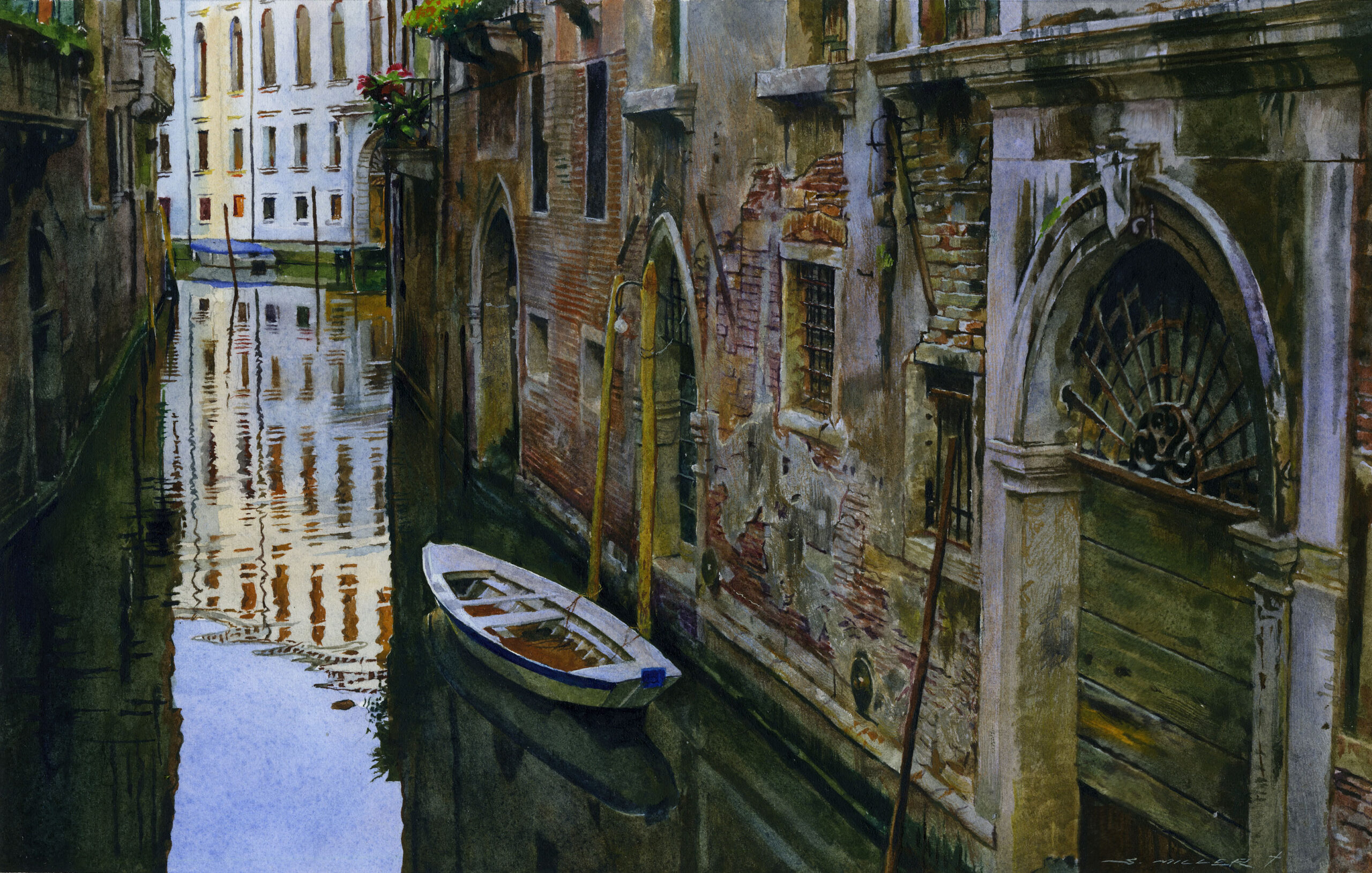
Many don’t see these quiet scenes in Venice, perhaps in fear of getting lost when taking the back alleyways. I love the contrast between the calm water, the white boat, and the elegant architecture, plus the lighting and mood.
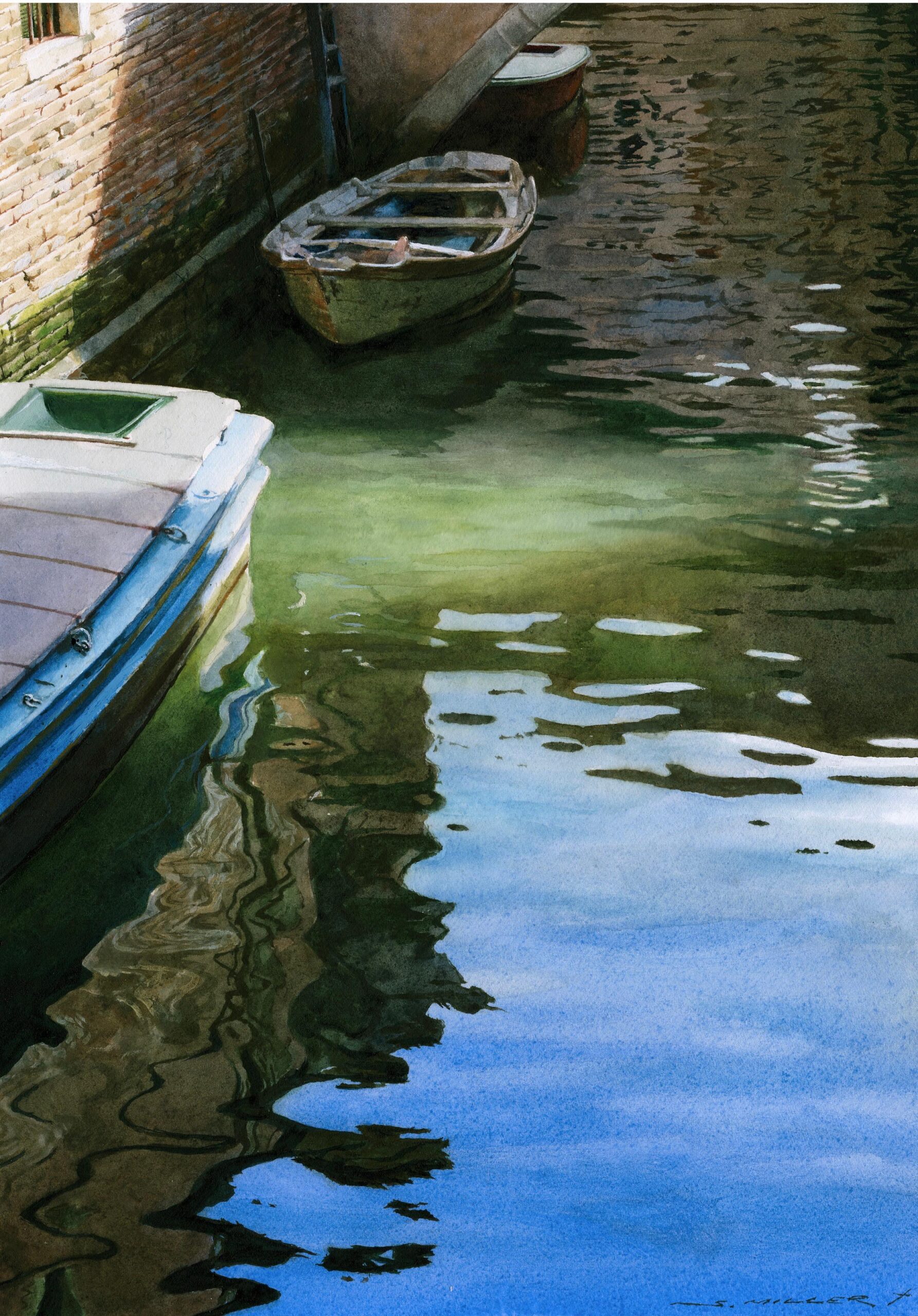
The drama of the sunlight coming into this setting is powerful, in contrast with the solitude of these boats and the sacred, gentle blue water.
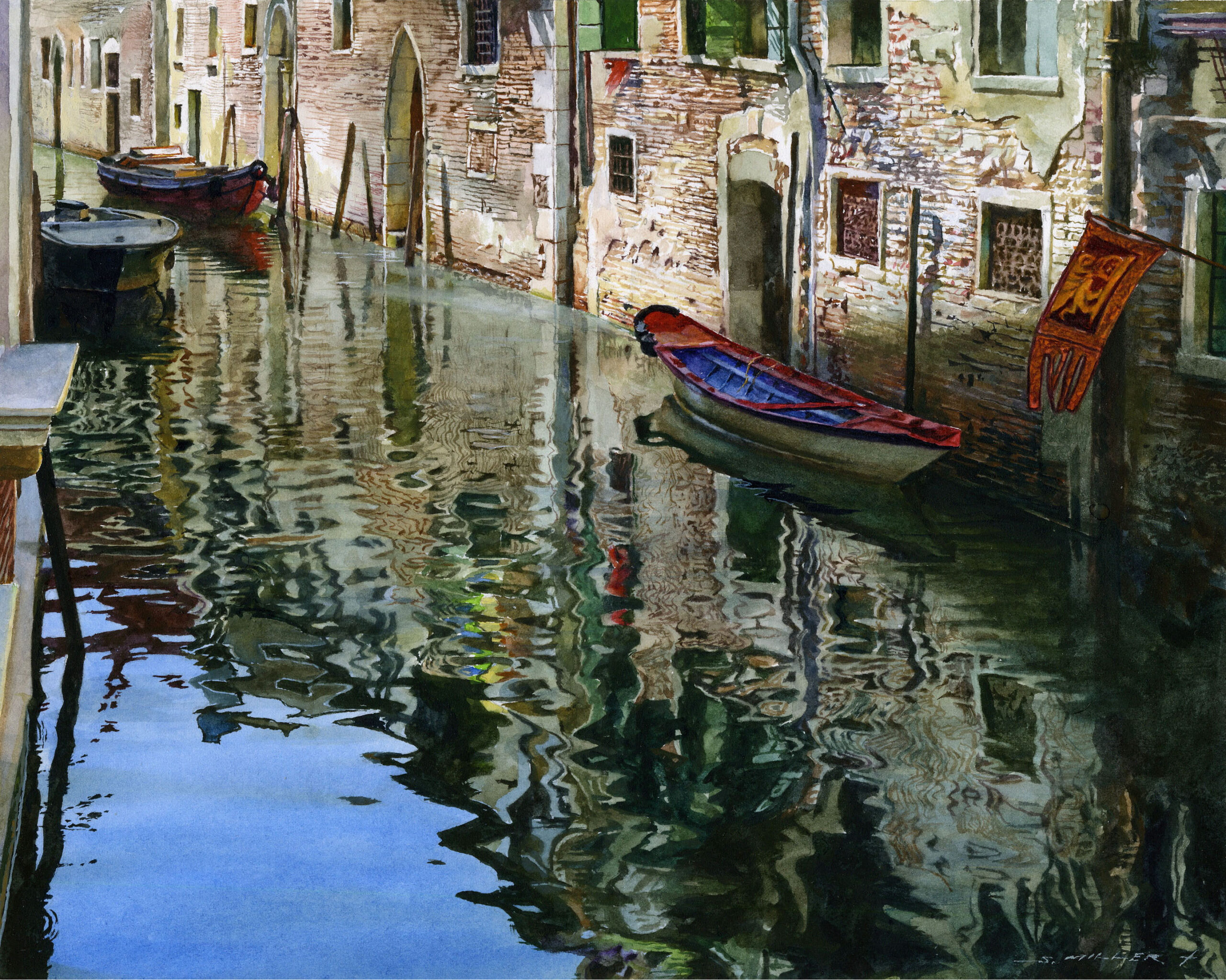
The contrast of the silky, gentle water and the amazing texture on the sides of the buildings – this is the essence of the Venice visual experience, it’s like jazz and classical music, side by side.
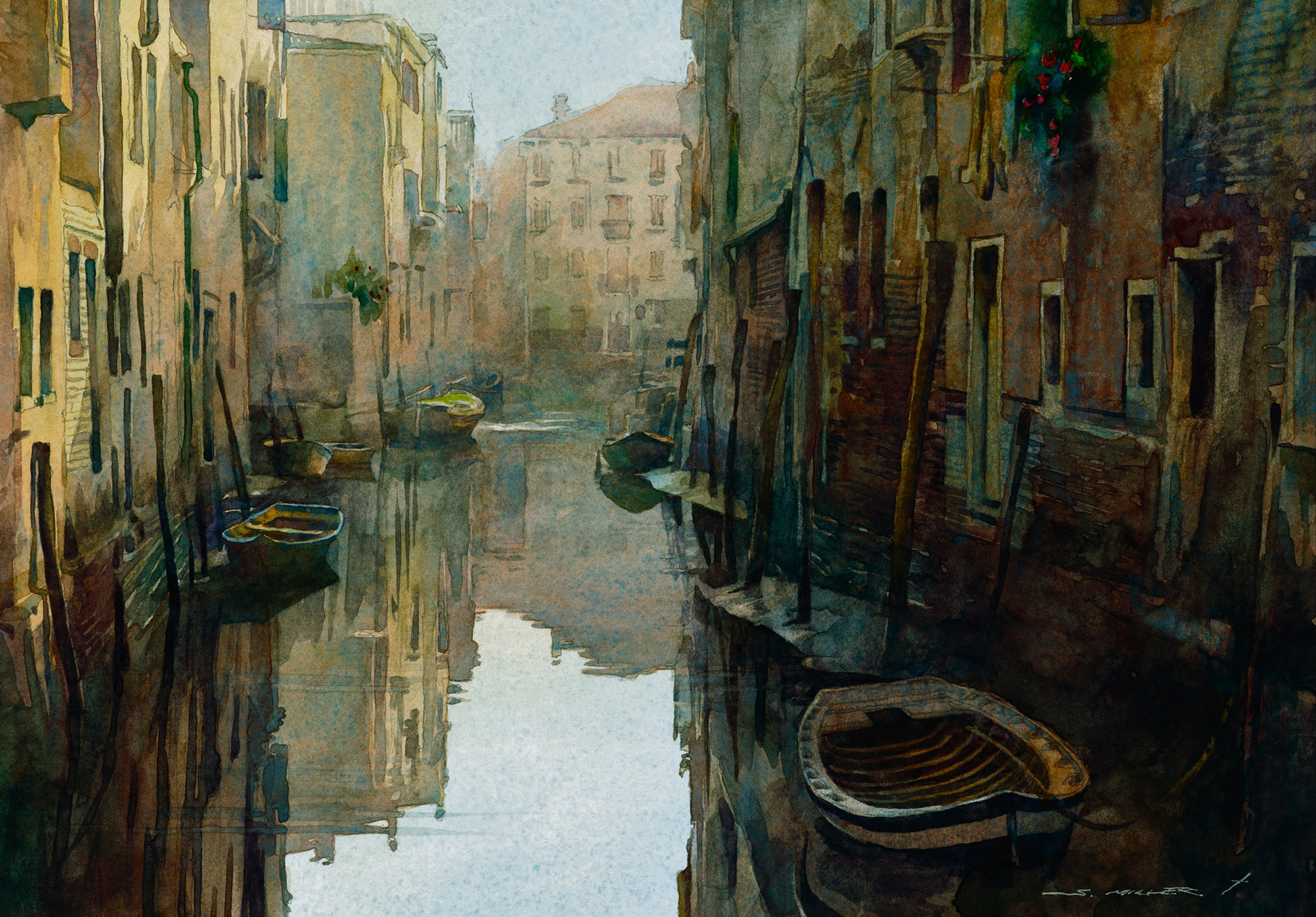
I created this painting from a black and white photo; I also added the boat, from my imagination, on the lower right corner of the painting.
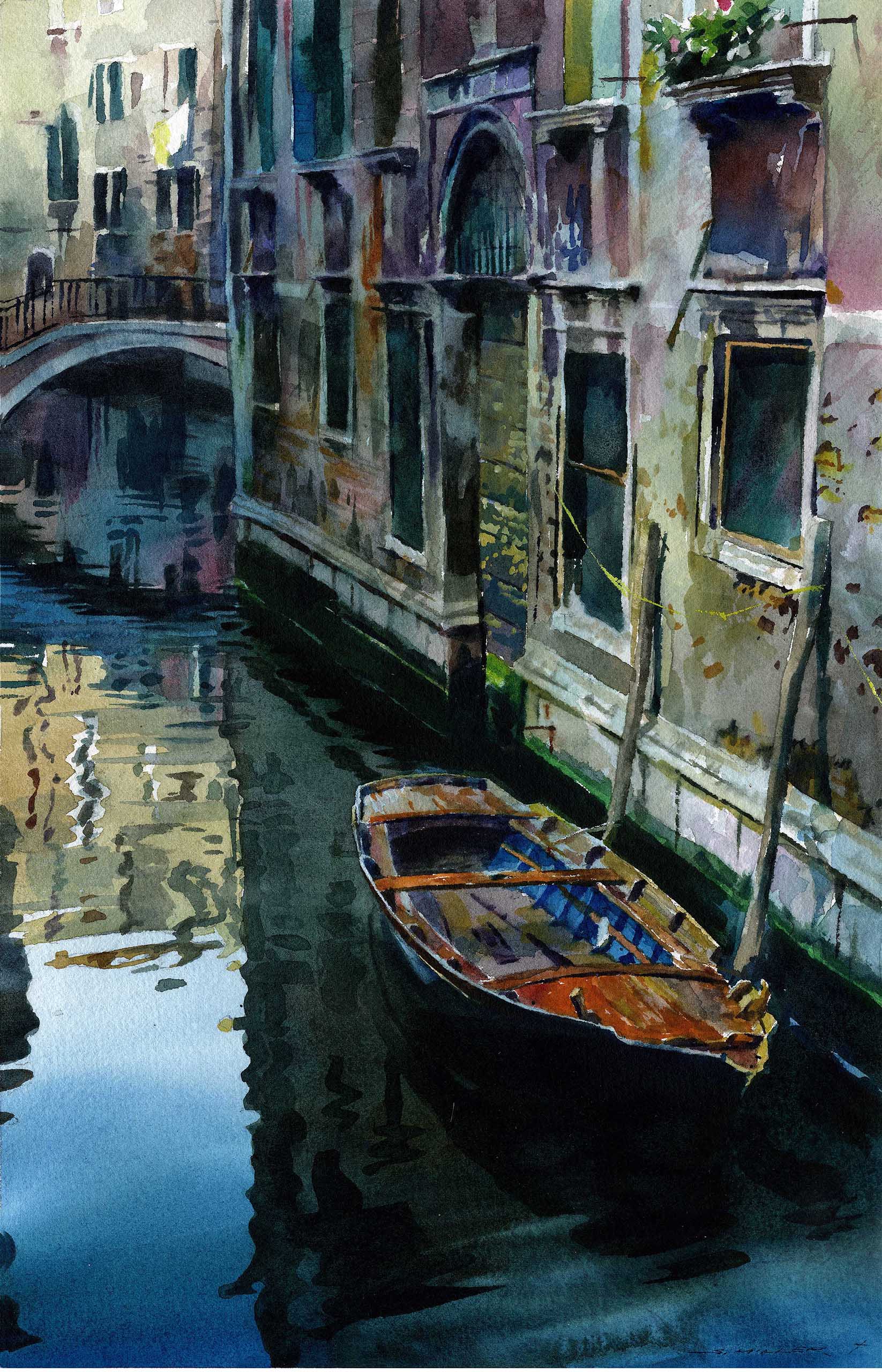
My video explains how I did this painting. The boat contrasted with the bridge in the background, the deteriorating buildings, and the water coming together in a magical way.
Connect with the artist at StanMiller.net.
The real secret to creating a successful painting simply comes down to two crucial factors:
1) Knowing how to choose the right subject…
2) Knowing the style of painting that matches your skill level…
Learn more in this preview of Stan’s art workshop, “Watercolor Techniques for Capturing Travel Memories – A Journey to Venice.”
Browse more articles on using egg tempera for realistic painting here at RealismToday.com.


